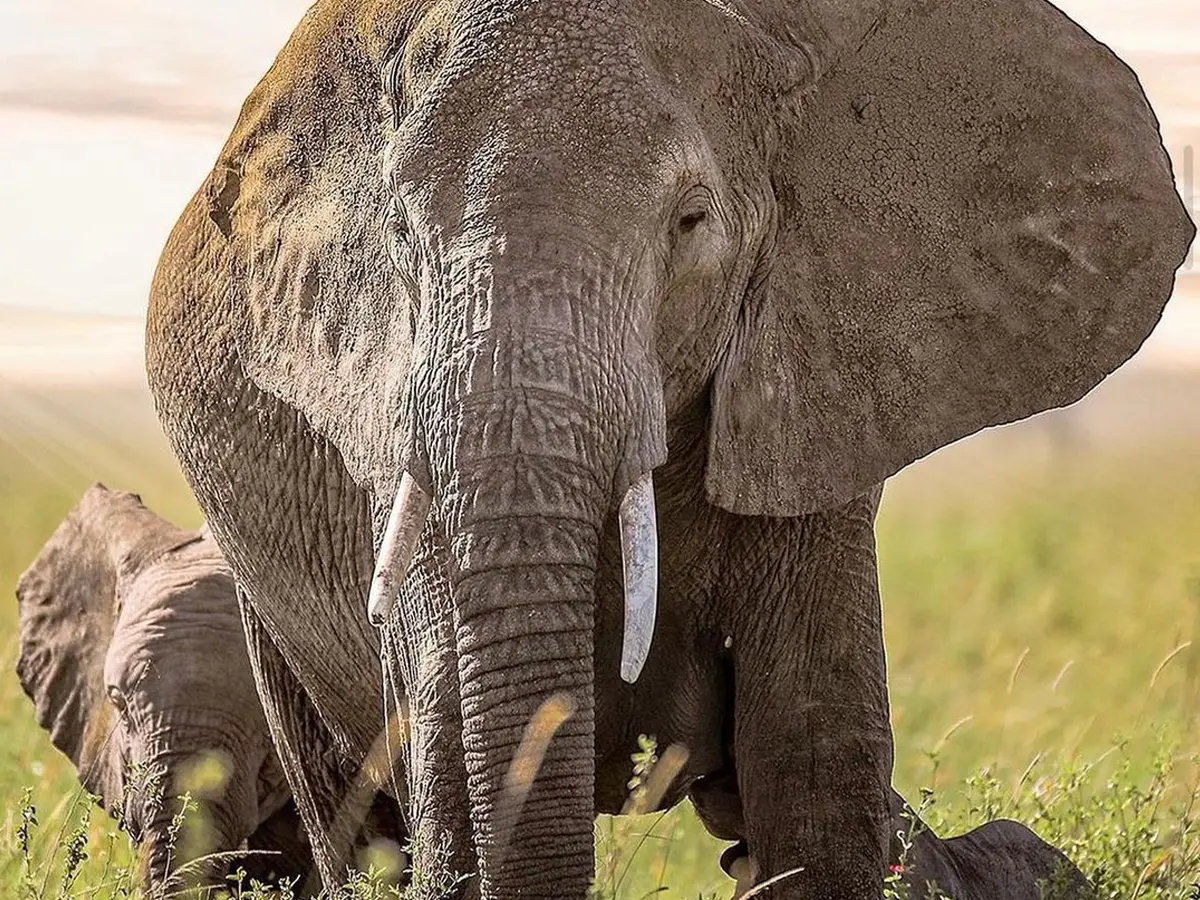
Few creatures capture the imagination quite like the African elephant in the vast expanses of Africa. Standing tall with wise eyes and a calm presence, these magnificent giants are a breathtaking sight and part of Africa’s renowned Big 5.
Join us as we unravel the mysteries of African elephants as we embark on a captivating journey into their world. Discover everything you need to know about these iconic animals, from their behavior and ecological significance to the pressing need for conservation efforts.
African elephants, scientifically known as Loxodonta africana, are found in 23 African countries. They inhabit diverse landscapes, from open savannas to lush forests and deserts. The highest concentrations are found in Southern and Eastern Africa, including Tanzania, Botswana, Zimbabwe, Kenya, Namibia, Zambia, and South Africa.
Distinguished by their large ears, elongated trunks, and tusks (found in males), African elephants live in tight-knit family groups led by wise matriarchs who pass down invaluable knowledge through generations. Each family unit, typically comprising around 10 females and their calves, is occasionally visited by bull elephants during mating season. These family units often join forces, forming clans led by female matriarchs.
African elephants are the biggest land animals on Earth. Adult males, called bulls, can weigh between 2,000 and 6,000 kg, while females, called cows, are smaller, weighing between 2,700 and 3,600 kg. They can be 3 to 4 m tall at their shoulders, which makes them colossal.
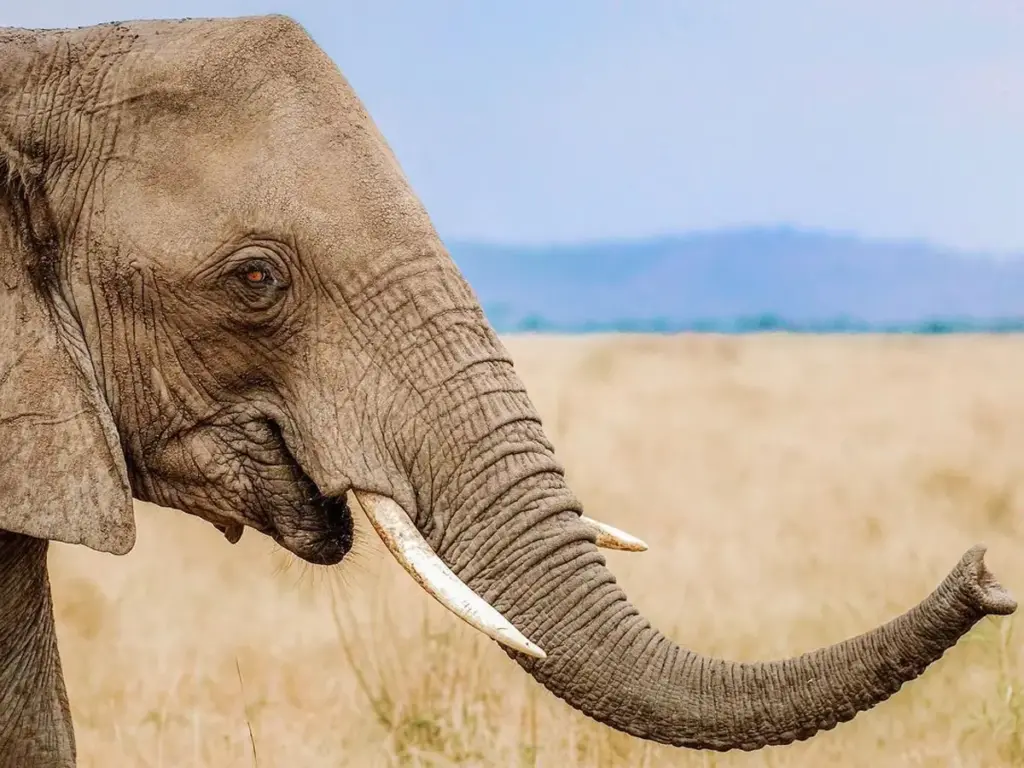
The trunk of the African elephant is genuinely remarkable. It is a versatile tool that helps these majestic creatures interact with their environment in countless ways. Their trunk can be up to 2 m long. It is like having an extra arm that helps them grab things, smell, breathe, and even make noises.
The ears of African elephants are striking in size and essential for their survival in the hot climates they inhabit. Remarkably, these ears can make up about one-sixth of the elephant’s entire body size, serving primarily as a sophisticated cooling mechanism.
The outer margins of the ears reveal intricate networks of tiny blood vessels. The skin is remarkably thin, measuring only 1 to 2 mm thick. As warm blood circulates through these vessels, the thin skin allows it to cool down when exposed to the outside air. This cooled blood returns to the body, reducing the elephant’s body temperature.
The tusks of African elephants have elongated incisor teeth primarily composed of ivory. They are present in both male and female elephants and typically start to emerge around the age of two. These tusks serve various functions, including digging for water, stripping bark from trees, and defense against predators. In addition to their practical uses, tusks play a crucial role in social interactions and mating rituals within elephant herds.
Ivory tusks have tragically made African elephants targets of poaching, as they are highly prized in the illegal wildlife trade. Despite conservation efforts, the persistent demand for ivory poses a significant threat to elephant populations. Therefore, stricter regulations and intensified protection measures are essential to safeguard these magnificent animals and ensure their survival for future generations.
The social structure and behavior of African elephants are nothing short of fascinating. Within their family units, elephants display remarkable levels of cooperation and communication. Whether it’s young calves’ playful antics or older females’ protective instincts, observing elephant behavior offers profound insights into their society. Their trumpeting calls, deep rumbles, and subtle body language serve as a means of communication, allowing them to navigate their environment and maintain social bonds.
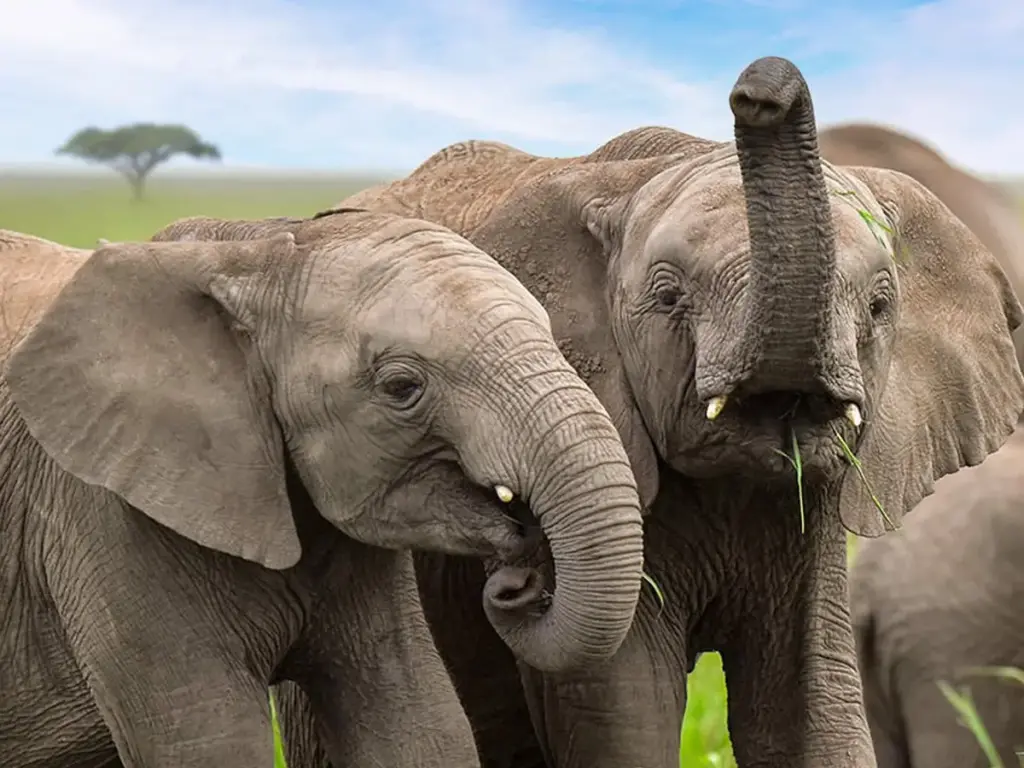
African elephants are herbivores with a big appetite, consuming between 149 and 169 kg of vegetation daily. With nearly 80% of their day dedicated to feeding, elephants graze on various plant matter, including grasses, small plants, bushes, fruits, twigs, tree bark, and roots. Rich in calcium and roughage, tree bark holds a particular appeal for elephants, who use their tusks to carve into trunks and tear off strips for consumption, aiding digestion.
Alongside their hefty plant-based diet, elephants have a substantial thirst, requiring about 68.4 to 98.8 L of water daily, with adult males capable of drinking up to 212 L in less than five minutes. Elephants dig up the earth to access salt and minerals to supplement their nutritional needs, using their tusks to churn the ground. This essential behavior not only sustains elephants but also fosters a harmonious ecosystem by providing vital resources for other wildlife, thus perpetuating the delicate balance of the circle of life.
Reproduction among African elephants is a fascinating and complex process, marked by intricate behaviors and physiological mechanisms. Females are receptive for approximately three weeks, but conception is only possible during a narrow window of three to five days.
Competition among bulls for mating rights is settled through a trial of strength, where pushing, tusking, wrestling, and ramming determine the dominant male. Males assess a female’s reproductive status by testing her urine for hormones, using their trunk to pick up chemical information and detect it through Jacobson’s organ in the upper palate of the mouth.
Once mating occurs, males typically stay with the female to prevent her from mating with other males. The gestation period for African and Asian elephants lasts almost two years, during which the calf’s ears, trunk, and tail begin to form by the third month of pregnancy. This process highlights African elephants’ remarkable reproductive adaptations and behaviors, ensuring their species’ continuation for generations to come.
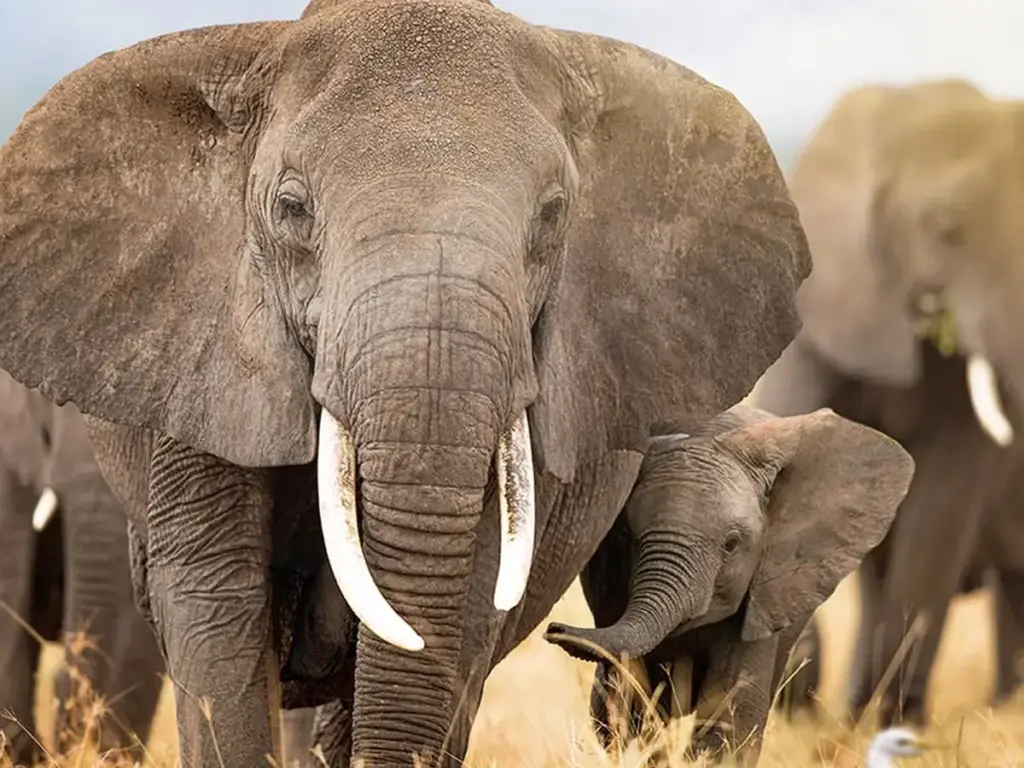
The birth and care of young African elephants display maternal instinct and familial cooperation within the herd. As the time for birth approaches, the pregnant female seeks close contact with another female in her family unit for protection during labor, often with the entire herd circling her to provide further security. Females typically give birth while standing, lasting only a few minutes. While twins have been documented, they are infrequent occurrences. After birth, the mother consumes the placenta to avoid detection by predators.
Newborn calves enter the world standing about 1 m high and weighing around 120 kg, with males sometimes weighing up to 165 kg. With the help of their mother and other females, calves quickly learn to stand on their own within minutes and are guided to nurse almost immediately. Remarkably, within one to two hours of birth, calves can walk, and within two days, they are strong enough to join the rest of the herd, who eagerly await their arrival nearby.
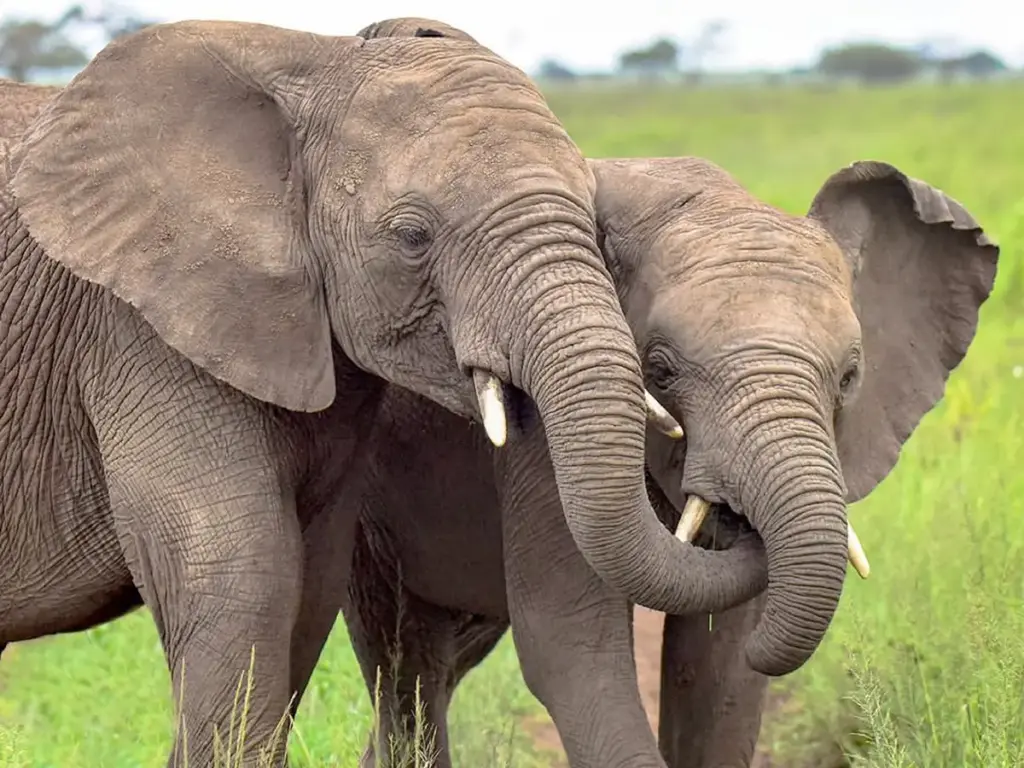
African elephants face numerous threats to their survival. The most common among these is poaching for their ivory tusks, which continues to decimate elephant populations across Africa. Additionally, habitat loss, human-wildlife conflict, and the illegal wildlife trade significantly challenge their long-term survival.
Hope is on the horizon as conservation organizations and governments work tirelessly to protect elephants and their habitats. Charities like One Nature Foundation are working to conserve the elephants’ natural ecosystems, promote global education, and learn more about elephants through a dedicated research program.
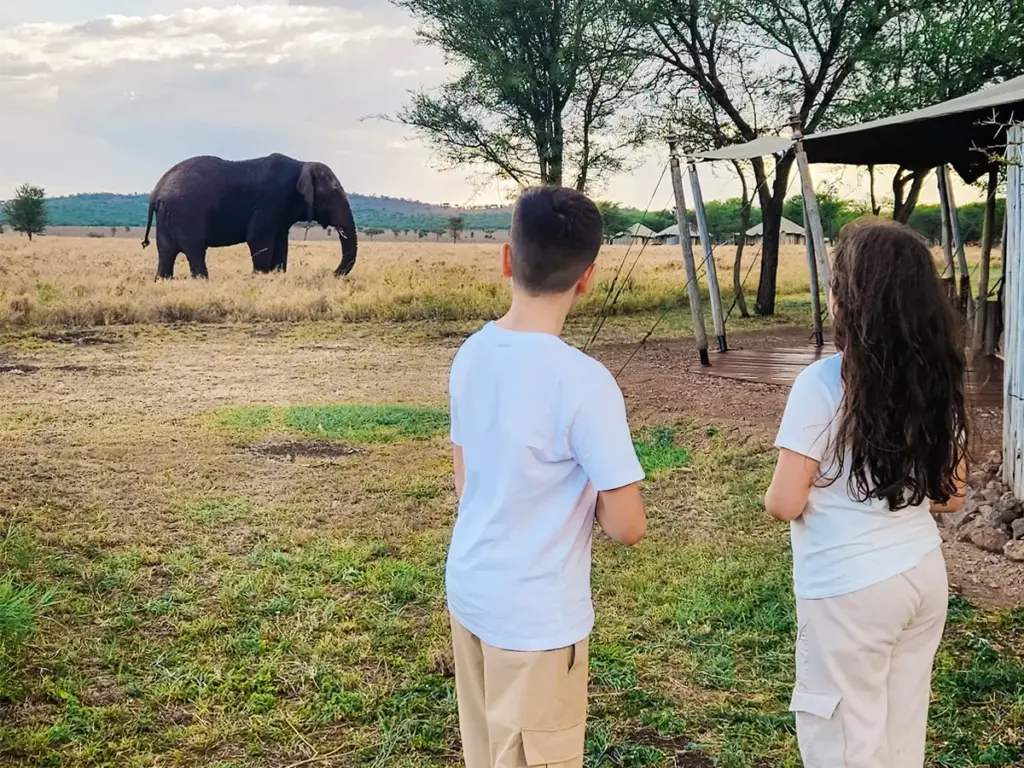
The unparalleled safari destination is located in the Serengeti National Park: One Nature Nyaruswiga. Positioned strategically in the Central Serengeti, this luxurious retreat offers an unmatched vantage point to witness the magnificence of African elephants in their natural habitat.
Embark on an unforgettable safari adventure with us, and play a crucial role in the efforts to protect and preserve these magnificent creatures for future generations.